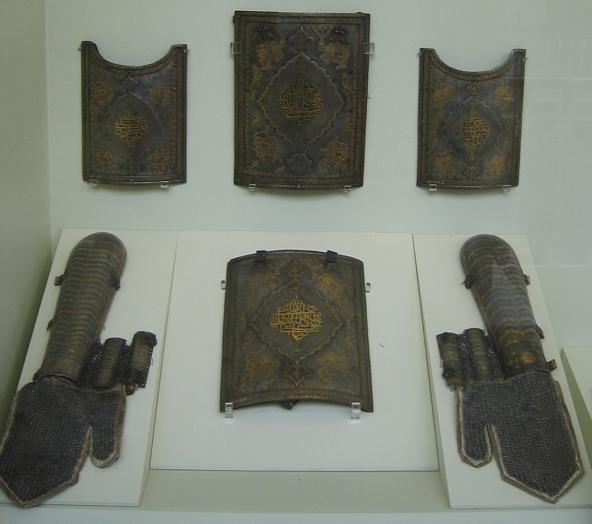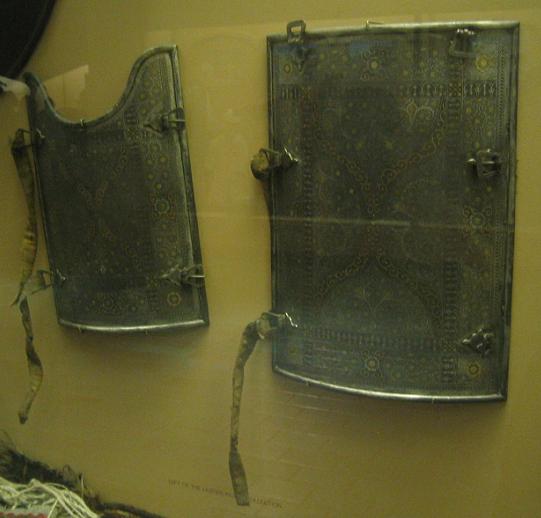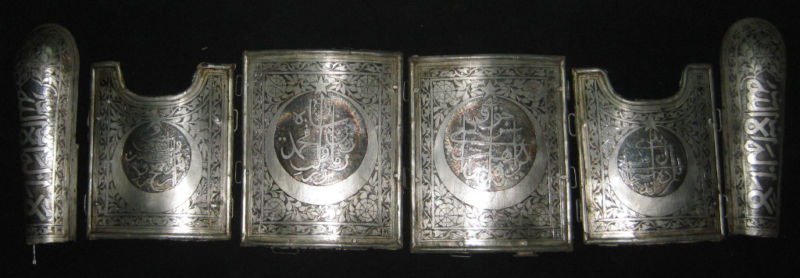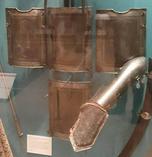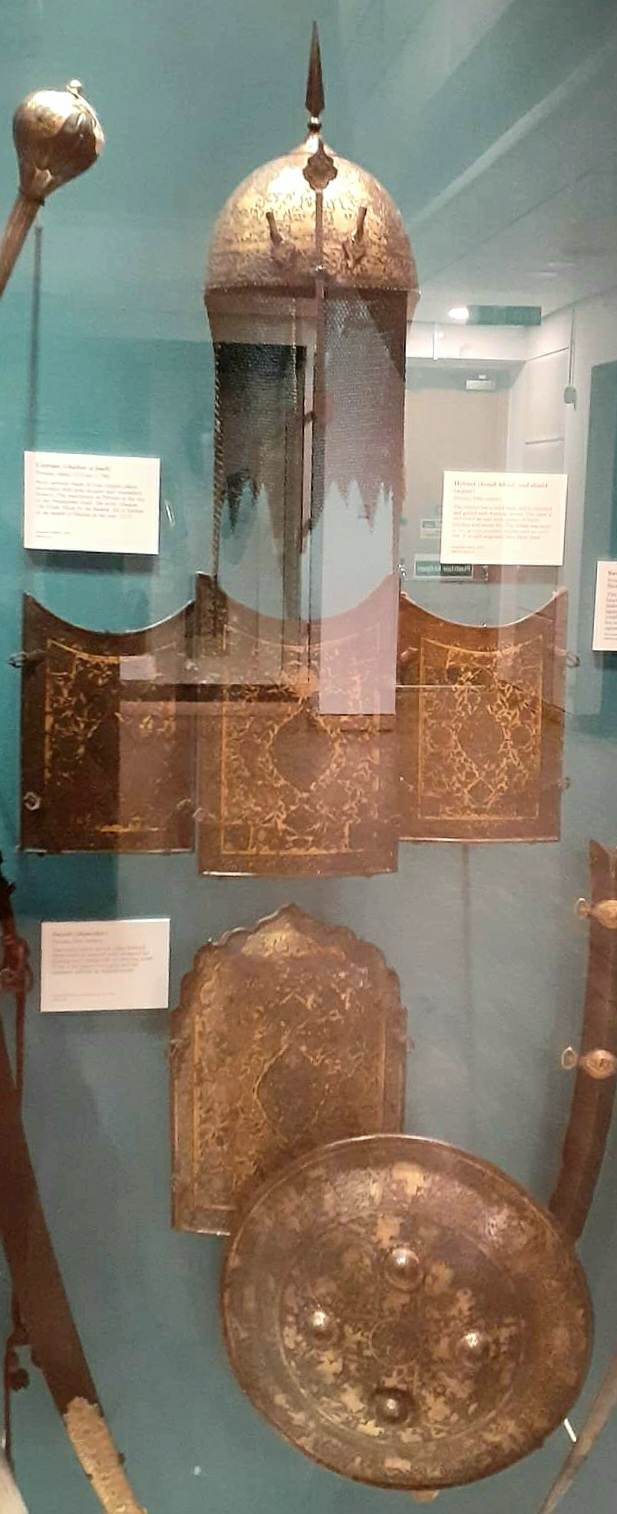Subject: irregular armored cavalryman
Culture: Turco-Iranian
Setting: civil war, Zand-Qajar Persia mid-late 18thc
Object: chahar aina 'four mirrors' armor plates; bazuband vambraces
Metropolitan Museum of Art > Stone Gallery of Arms and Armor *
"Mail shirt Steel, brass, copper Indian, Mughal period, or Iranian, Qajar period, dated 1816/17
The shirt is crafted primarily of butted steel rings with an inscription worked in brass and copper. The inscription includes the 'Prayer to Ali,' a talismanic prayer often used in times of danger. The shirt is therefore designed to provide spiritual as well as physical protection."
* National Museum of Scotland > Royal Museum
"Iran 18th Century Chinese records of the 8th century praised the skill of Iranian armourers who later practiced their craft in Turkey and Russia and also greatly influenced the techniques and styles of arms and armour used in India. The armour of steel inlaid in gold was decorated with foliage scrolls and different styles of calligraphy -- naskh (a precise cursive script), thuluth (a larger more decorative variant) and nasta'liq (a graceful cursive form). Inscriptions were important -- prayers requesting the protection of God, quotations from religious verse and sometimes the name of the owner and date.
* Curious House
* National Museum of Scotland > Royal Museum
"ARMOUR Iran 17th-18th Centuries Steel vambraces, bazuband, were also decorated with talismanic inscriptions involving the name of God. The examples here are dated to 1691 and 1592 and have additional dates of 1714 and 1711 possibly indicating repairs. ..."
* American Museum of Natural History > Stout Hall of Asian Peoples
Royal Armouries Museum > Oriental Gallery *
"Helmet (kolah khud) and shield (separ) Persian, 19th century The helmet has a solid skull and is chiselled and gilded with hunting scenes.
The separ is decorated en suite with scenes of battle, hunting and social life.
The shield was made in two pieces, a centre section and an outer rim. It would originally have been lined."
"Cuirass (chahar a'ineh) Persian, dated 1213AH (1798) Body armour made of four copper plates decorated with gold lacquer and enamelled flowers. The inscription in Persian at the top of the breastplate reads 'the noble Ghulam 'Ali Khan.
Made by the humble 'Ali of Isfahan in the month of Shaban in the year 1213'." ...
* Royal Armouries Museum > Oriental Gallery
"Armour Persian, dated 1201 AH (1786/7) Comprising helmet (kolah khud), cuirass (chahar a'ineh) and arm defence (bazuband). It is decorated with etched designs showing hunting scenes and panels of calligraphy. The decoration is by two artists, one decorated the separ and the front and one side of the chahar a'ineh, the other decorated the rest."
